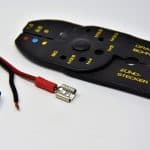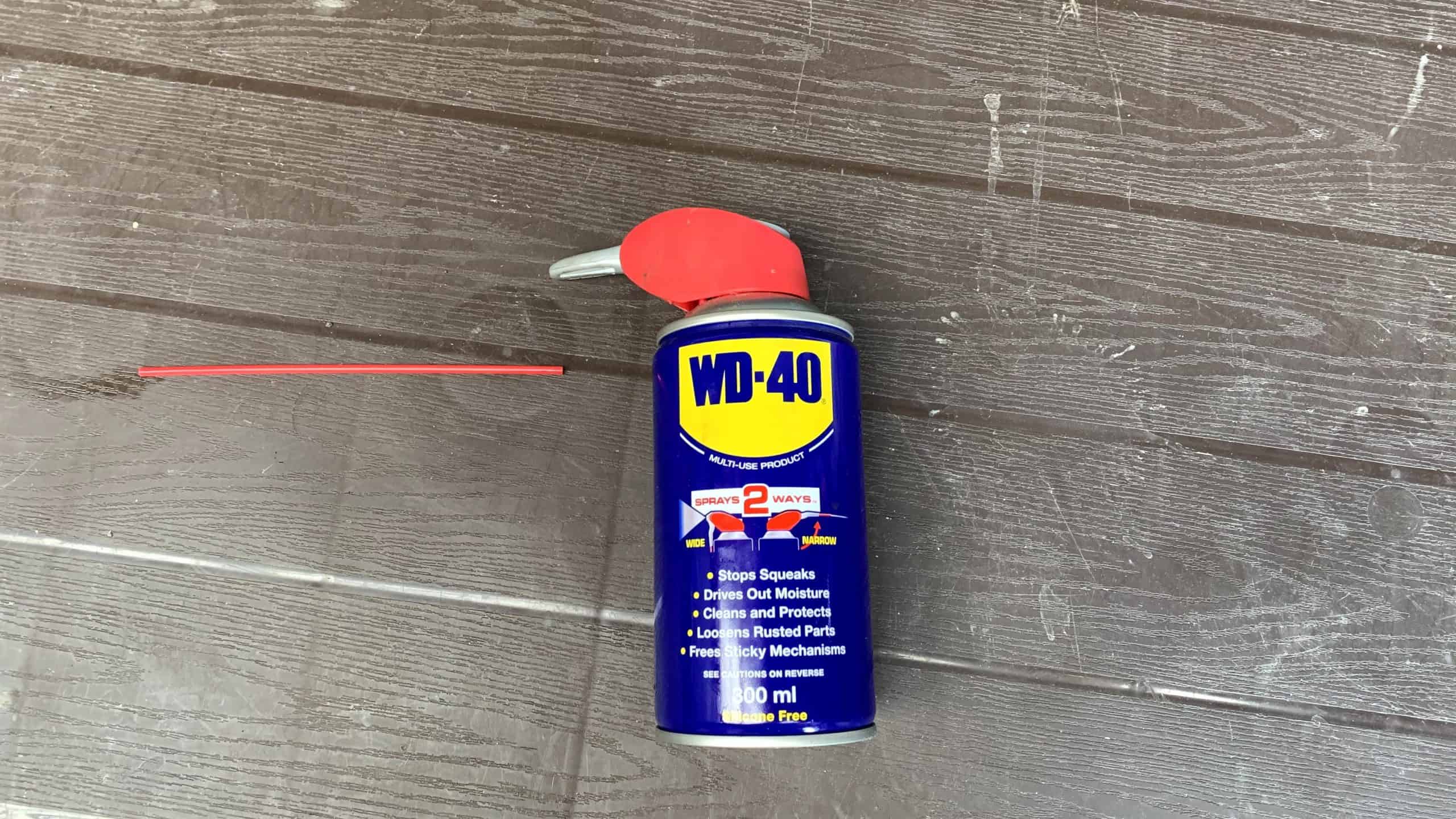WD-40 was invented in the 1950s and has been solving all sorts of issues for years. It has so many applications that sometimes it’s easy to go overboard and spray too much WD-40. This can leave a bad smell, but how long does the WD-40 smell last?
With good ventilation, you can expect a WD-40 smell to disappear after a few hours. Wipe up excess WD-40 and allow airflow and sunlight to do the work of deodorizing. Long-term exposure to the smell is unlikely to be harmful.
I’ll explain what gives WD-40 its distinctive smell as well as the profile of the substance in terms of danger risk. We’ll also look at some cleaning tips to help remove a strong smell of WD-40 that you can do with household items.

Why Does WD-40 Smell?
The actual ingredients of WD-40 are still secret. However, the material data safety sheet for the product does list that its physical and chemical properties include ‘mild petroleum odor’.
Ingredients contained within the material data sheet also include some familiar names. There are hydrocarbons, petroleum, and mineral oils.
Hydrocarbons themselves are classified into four groups, one of which is aromatic hydrocarbons. They are so-called due to their strong smell. Common hydrocarbons such as methane, butane, propane, and hexane all bring to mind pungent odors.
Petroleum also is associated with a strong, long-lasting smell. Mineral oils tend not to have this strong odor and are often listed as odorless.
How To Reverse WD-40 Smell
WD-40 will evaporate over time if there is enough airflow.
Confined spaces may slow this process down significantly. If possible, you should try and remove the object that will be sprayed with WD-40 to a place where it can sit and evaporate and then move it back later.
Other general cleaning methods will do wonders in removing the WD-40 smell. If the WD-40 is on clothes or other washable objects, create a mixture of white vinegar, water, and dish detergent. Dab this onto the areas that smell the strongest and leave to sit.
Laundry soakers or other similar products have also been shown to be effective.
Place the item in a bucket of water that has had the laundry soaker already mixed in the concentration as advised by the manufacturer. Leave for a few hours and then wring out and dry.
If washing is not possible, leaving the object under a cover but exposed to the elements. Sunlight can help remove most smells but direct exposure to sunlight over long periods is not recommended.
Excess WD-40 can be wiped up with old rags. WD-40 will continue to release vapors for some time after first being sprayed.
How Long Does It Take For WD-40 Smell To Go Away?
In most situations, you can expect the smell to be gone after a few hours. Well-ventilated areas will have the smell of WD-40 dissipate after anywhere from 30 minutes.
If the WD-40 is in a confined space or low airflow area, you can expect it to last for days or weeks. For example, WD-40 sprayed into a lock will likely have the odor hanging around for at least a day.
Check out my article here on why locksmiths hate WD-40. You can read it here.
You can reduce the chance of a strong smell by just using small amounts initially. A small spray and then a test of the lock will reduce the overall amount of substance able to let off vapors.
Locks will move better once all parts are lubricated. This means that you should try and turn the lock to coat internal substances better.
As the WD-40 spreads throughout the mechanism, it will turn a seized lock into a buttery smooth one with minimal amounts needed. So don’t overdo it as WD-40 will be effective at low amounts.
Is The Smell Of WD-40 Harmful?
Certain organizations run tests and collect data about the safety rating of products. WD-40 is a chemical that has a safety data sheet that lists the major ingredients and their concentration, warnings, and other information about the handling of it.
In the United States, this information is required to comply with the Occupational Safety and Health Administration’s standards. There is a hazard rating scheme designed to help workplaces that use WD-40 properly inform workers about the danger of products.
According to the hazard rating scheme, WD-40 is overall minimal harm. The product’s datasheet lists the most dangerous hazard as the fire hazard given the high flammability. This rates a 4 on the scale, being classified as a severe hazard.
However, in regards to health and being a physical hazard, WD-40 is very low risk. In regards to reactivity and personal protection, WD-40 is listed as a 0, being a ‘minimal hazard’.
For health, WD-40 rates as a 1, this is also known as being a slight hazard. This means you would need to intentionally consume significant amounts for any ill effects. Basic precautions such as not deliberately inhaling and using in a well-ventilated area will mitigate this harm.
How To Get Rid Of WD-40 Smell
Bicarbonate of soda or sodium bicarbonate can be used to lessen or remove the smell of WD-40. Sprinkling a number of stains caused by WD-40 can help deodorize it.
You can also leave a bowl of powder near the offending area.
How Long Does WD-40 Last?
WD-40 will have varying lifetime usage depending on the application. In workplace situations, WD-40 is used to remove water and lubricate tools. Certain use cases can see one coat per week keeping tools working despite being exposed to water 50 times a day.
Other applications such as hinges or rustproofing can be effective for many years. Stubborn locks that refuse to budge can be fixed almost instantly with a small amount of WD-40.





